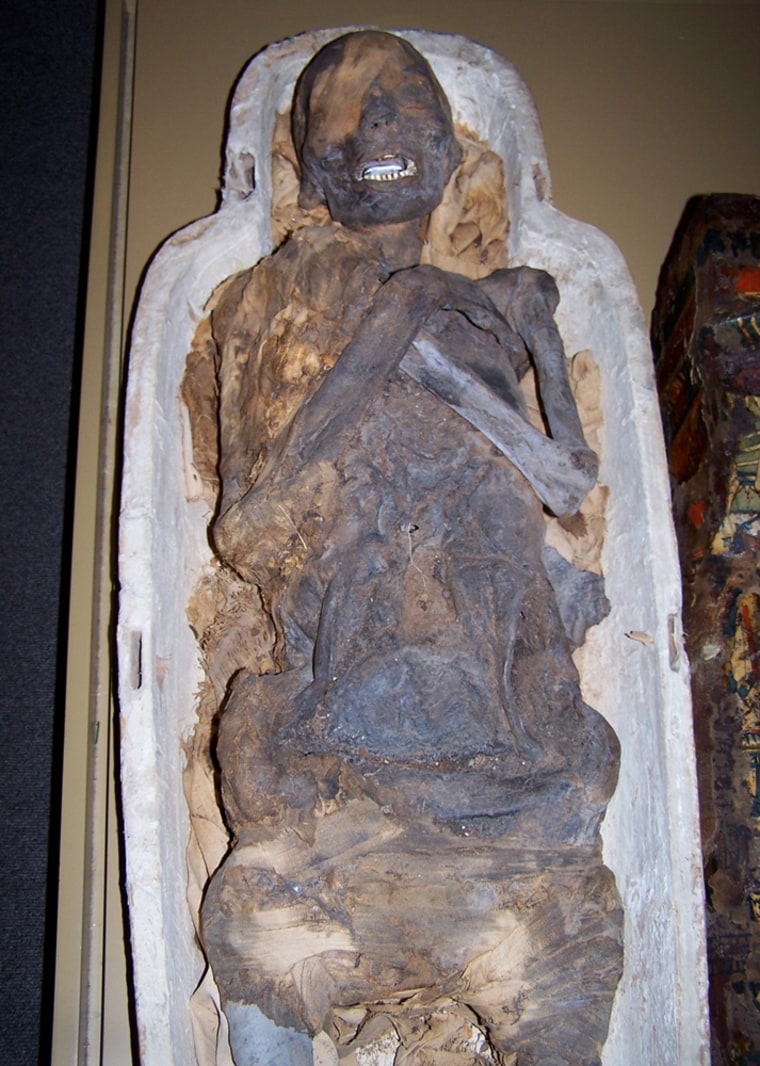Circus showman P.T. Barnum wasn't fooling. The Egyptian mummy in his museum is for real. A pair of imaging experts who specialize in mummies have confirmed that the mummy — Pa-Ib — was a real person.
Barnum's second wife had donated the mummy to the museum in 1892. The mummy is supposedly that of an Egyptian priest who lived more than 2,500 years ago.
The experts from Quinnipiac University, Jerry Conlogue and Ron Beckett, confirmed that the mummy was that of someone 18 years or older. But its gender and whether it truly is the Egyptian priest is still a mystery.
"It's never been scientifically researched, how old was he when he died, is it male or female? We're ecstatic to be here," Beckett said.
Beckett and Conlogue, who also host National Geographic's "Mummy Road Show," have investigated more than 500 mummies around the world. The experts hope to answer many of the lingering questions of Pa-Ib during their one-month research.
"Today, we're determining the condition of the mummy. Is he in good shape? How fragile is he? And collect as many details as we can with limited equipment," Conlogue said.
If the mummy is stable enough to be moved, the archaeological team hopes to take a CT scan at a local doctor's office. That would give them a more detailed photograph than they were able to secure on site Thursday.
The first film revealed Pa-Ib's got bad teeth.
"They're worn down, his teeth are kind of flat," Conlogue said. "We don't know what strata of society he came from. That's not to say the Pharaohs didn't have bad teeth."
The research would eventually reveal whether Pa-Ib had a life of labor or leisure, old fractures and the gender, Becker said.
Kathy Maher, the museum's executive director, is eager for a translation of the hieroglyphics on Pa-Ib's sarcophagus.
"That's another fascinating exploration, another piece of the puzzle," Maher said.
